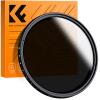How To Use My Phone As A Webcam?
In today's digital age, the need for high-quality video communication has never been more critical. Whether you're attending virtual meetings, streaming content, or catching up with loved ones, having a reliable webcam is essential. However, not everyone has access to a high-quality webcam, and purchasing one can be an additional expense. Fortunately, there's a practical solution that many people overlook: using your smartphone as a webcam. This article will guide you through the process of transforming your phone into a webcam, ensuring you get the best video quality without breaking the bank.
Why Use Your Phone as a Webcam?

Before diving into the how-to, it's essential to understand why using your phone as a webcam is a viable option. Modern smartphones come equipped with high-resolution cameras that often surpass the quality of standard webcams. Additionally, using your phone can be a cost-effective solution, especially if you already own a smartphone with a decent camera. This method also offers flexibility, allowing you to position your phone in various angles and locations to achieve the best video setup.
Requirements
To use your phone as a webcam, you'll need the following:
1. A Smartphone: Ensure your phone has a good quality camera.
2. A Computer: This can be a PC or a Mac.
3. A USB Cable or Wi-Fi Connection: Depending on the method you choose.
4. Software or Apps: Specific applications that facilitate the connection between your phone and computer.
Step-by-Step Guide
1. Choose the Right App
Several apps can turn your smartphone into a webcam. Some popular options include:
- DroidCam (for Android and iOS)
- EpocCam (for iOS)
- iVCam (for iOS and Android)
- Iriun (for iOS and Android)
Each app has its unique features, so choose one that best suits your needs. For this guide, we'll use DroidCam as an example.
2. Install the App on Your Phone
Go to the Google Play Store or Apple App Store and download the DroidCam app. Once installed, open the app and grant the necessary permissions, such as access to your camera and microphone.
3. Install the Companion Software on Your Computer
Visit the DroidCam website and download the companion software for your computer. Follow the installation instructions to set it up. This software will allow your computer to recognize your phone as a webcam.
4. Connect Your Phone to Your Computer
You can connect your phone to your computer via USB or Wi-Fi. Here's how to do both:
Via USB:
- Connect your phone to your computer using a USB cable.
- Ensure USB debugging is enabled on your phone (for Android users). You can find this option in the Developer Options menu.
- Open the DroidCam app on your phone and the companion software on your computer.
- Select the USB option in the companion software and click "Start."
Via Wi-Fi:
- Ensure both your phone and computer are connected to the same Wi-Fi network.
- Open the DroidCam app on your phone. It will display an IP address.
- Open the companion software on your computer and select the Wi-Fi option.
- Enter the IP address displayed on your phone into the companion software and click "Start."
5. Configure Your Video Settings
Once connected, you can configure your video settings to ensure optimal quality. Adjust the resolution, frame rate, and other settings within the app and companion software. Experiment with different settings to find the best balance between video quality and performance.
6. Select Your Phone as the Webcam in Your Video Conferencing Software
Now that your phone is set up as a webcam, you need to select it as the video source in your video conferencing software. Here's how to do it in some popular applications:
Zoom:
- Open Zoom and go to Settings.
- Click on the Video tab.
- Select "DroidCam" (or the name of the app you're using) from the Camera dropdown menu.
Skype:
- Open Skype and go to Settings.
- Click on the Audio & Video tab.
- Select "DroidCam" from the Camera dropdown menu.
Microsoft Teams:
- Open Microsoft Teams and go to Settings.
- Click on Devices.
- Select "DroidCam" from the Camera dropdown menu.
Tips for Optimal Performance
To ensure the best performance and video quality, consider the following tips:
1. Stable Mounting: Use a tripod or phone stand to keep your phone steady. Avoid holding the phone by hand, as this can result in shaky video.
2. Lighting: Good lighting is crucial for high-quality video. Position yourself in a well-lit area or use additional lighting sources to illuminate your face.
3. Battery Management: Using your phone as a webcam can drain its battery quickly. Keep your phone plugged in to ensure it doesn't run out of power during important calls.
4. Network Stability: If using Wi-Fi, ensure you have a stable and strong connection to avoid video lag or disconnections.
5. Close Unnecessary Apps: Close any unnecessary apps on your phone to free up resources and improve performance.
Troubleshooting Common Issues
Despite following the steps, you might encounter some issues. Here are common problems and their solutions:
1. Connection Issues: If your phone isn't connecting to your computer, ensure the USB cable is working correctly or that both devices are on the same Wi-Fi network. Restart both devices if necessary.
2. Poor Video Quality: Adjust the resolution and frame rate settings in the app and companion software. Ensure your phone's camera lens is clean.
3. Audio Problems: If the audio isn't working, check the microphone settings in your video conferencing software. Ensure the app has permission to access your phone's microphone.
Using your phone as a webcam is a practical and cost-effective solution for achieving high-quality video communication. With the right app and setup, you can transform your smartphone into a reliable webcam for virtual meetings, streaming, and more. By following the steps outlined in this guide, you'll be well on your way to enhancing your video communication experience without the need for additional hardware. So, the next time you find yourself in need of a webcam, remember that your smartphone can be a powerful tool right at your fingertips.








































